Showing Spotlights 1121 - 1128 of 2784 in category All (newest first):
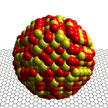 The adoption of a newly developed, facile synthesis method in catalyst designs may permit the rapid screening of nanoalloys for water contaminants. Given the compositional dynamics of this technique, a series of nanoalloys with different surface compositions can be quickly synthesized using a single starting solution and the optimal metal ratio experimentally determined to find the best catalytic reactivity for degrading the pollutant.
The adoption of a newly developed, facile synthesis method in catalyst designs may permit the rapid screening of nanoalloys for water contaminants. Given the compositional dynamics of this technique, a series of nanoalloys with different surface compositions can be quickly synthesized using a single starting solution and the optimal metal ratio experimentally determined to find the best catalytic reactivity for degrading the pollutant.
Sep 15th, 2014
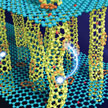 Researchers consider the rational combination of carbon nanotubes (CNTs) and graphene into three-dimensional hybrids an effective route to amplify the inherent physical properties at the macroscale. By in situ nitrogen doping and structural hybridization of carbon nanotubes and graphene, researchers have now successfully fabricated nitrogen-doped aligned carbon nanotube/graphene sandwiches. In this work, aligned CNTs and graphene layers were anchored to each other, constructing a sandwich-like hierarchical architecture with efficient 3D electron transfer pathways and ion diffusion channels.
Researchers consider the rational combination of carbon nanotubes (CNTs) and graphene into three-dimensional hybrids an effective route to amplify the inherent physical properties at the macroscale. By in situ nitrogen doping and structural hybridization of carbon nanotubes and graphene, researchers have now successfully fabricated nitrogen-doped aligned carbon nanotube/graphene sandwiches. In this work, aligned CNTs and graphene layers were anchored to each other, constructing a sandwich-like hierarchical architecture with efficient 3D electron transfer pathways and ion diffusion channels.
Sep 12th, 2014
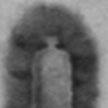 The flexibility required when fabricating flexible electronic components has led to the use of plastic substrates and different transfer techniques to fabricate flexible devices. However, one of the biggest obstacles to mass adoption of flexible electronics has been the incompatibility with industry's state-of-the-art silicon-based CMOS processes. Researchers have now developed a new process that can be used to reduce the thickness of the silicon substrate until the required flexibility is obtained. In new work, they demonstrate a flexible (0.5 mm bending radius) nanoscale FinFET on silicon-on-insulator using a back-etch based substrate thinning process.
The flexibility required when fabricating flexible electronic components has led to the use of plastic substrates and different transfer techniques to fabricate flexible devices. However, one of the biggest obstacles to mass adoption of flexible electronics has been the incompatibility with industry's state-of-the-art silicon-based CMOS processes. Researchers have now developed a new process that can be used to reduce the thickness of the silicon substrate until the required flexibility is obtained. In new work, they demonstrate a flexible (0.5 mm bending radius) nanoscale FinFET on silicon-on-insulator using a back-etch based substrate thinning process.
Sep 9th, 2014
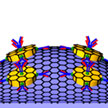 As a prime example of how the integration of multiple disparate nanotechnology fields allows the realization of novel or expanded functionalities, researchers have demonstrated a multimodal sensing device which integrates the functionalities of three traditional single mode sensors. Specifically, the team fabricated a graphene-based multimodal biosensing device, capable of transducing protein binding events into optical, electrical, and mechanical signals.
As a prime example of how the integration of multiple disparate nanotechnology fields allows the realization of novel or expanded functionalities, researchers have demonstrated a multimodal sensing device which integrates the functionalities of three traditional single mode sensors. Specifically, the team fabricated a graphene-based multimodal biosensing device, capable of transducing protein binding events into optical, electrical, and mechanical signals.
Sep 8th, 2014
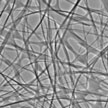 Nanotechnology has the potential to deliver the next generation lithium-ion batteries (LIBs) with improved performance, durability and safety at an acceptable cost. However, several challenging bottlenecks remain to build the ideal nanostructured electrodes for ultrafast rechargeable LIBs. To overcome these challenges, researchers developed a mechanical force-driven method to prepare elongated bending titania-based nanotubes for high-rate LIBs.
Nanotechnology has the potential to deliver the next generation lithium-ion batteries (LIBs) with improved performance, durability and safety at an acceptable cost. However, several challenging bottlenecks remain to build the ideal nanostructured electrodes for ultrafast rechargeable LIBs. To overcome these challenges, researchers developed a mechanical force-driven method to prepare elongated bending titania-based nanotubes for high-rate LIBs.
Sep 4th, 2014
 On 7th February 2014, the Belgian federal government issued a press release declaring that the draft Royal Decree creating a Belgian register for nanomaterials has been approved. The Royal Decree would enter into force on 1st January 2016 for substances manufactured at the nanoscale and on 1st January 2017 for preparations containing a substance or substances manufactured at the nanoscale. We provide here an overview of this future Belgian nano register and some suggestions to be ready for the 2016 and 2017 deadlines.
On 7th February 2014, the Belgian federal government issued a press release declaring that the draft Royal Decree creating a Belgian register for nanomaterials has been approved. The Royal Decree would enter into force on 1st January 2016 for substances manufactured at the nanoscale and on 1st January 2017 for preparations containing a substance or substances manufactured at the nanoscale. We provide here an overview of this future Belgian nano register and some suggestions to be ready for the 2016 and 2017 deadlines.
Sep 3rd, 2014
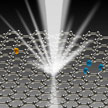 Researchers have demonstrated the experimental realization of the first all-carbon optical diode that is ready for scalable integration along with being inherently broadband in operation with no restrictions on polarization or phase-matching criteria. As they show, harnessing the optical properties of graphene-based materials offers an opportunity to create the all-photonic analogs of diodes, transistors, and photonic logic gates that will one day enable construction of the first all-photonic computer.
Researchers have demonstrated the experimental realization of the first all-carbon optical diode that is ready for scalable integration along with being inherently broadband in operation with no restrictions on polarization or phase-matching criteria. As they show, harnessing the optical properties of graphene-based materials offers an opportunity to create the all-photonic analogs of diodes, transistors, and photonic logic gates that will one day enable construction of the first all-photonic computer.
Sep 1st, 2014
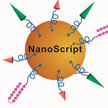 Gene transcription is tightly regulated by proteins called transcription factors. These transcription factor (TF) proteins are master regulators of transcriptional activity and gene expression. Transcription factors are responsible for transcribing the correct genes and therefore for producing the right quantity of proteins. TF-based gene regulation is a promising approach for many biological applications, however, several limitations hinder the full potential of TFs. To overcome these problems, an international team of researchers has developed an artificial, nanoparticle-based transcription factor, termed NanoScript, which is designed to mimic the structure and function of TFs.
Gene transcription is tightly regulated by proteins called transcription factors. These transcription factor (TF) proteins are master regulators of transcriptional activity and gene expression. Transcription factors are responsible for transcribing the correct genes and therefore for producing the right quantity of proteins. TF-based gene regulation is a promising approach for many biological applications, however, several limitations hinder the full potential of TFs. To overcome these problems, an international team of researchers has developed an artificial, nanoparticle-based transcription factor, termed NanoScript, which is designed to mimic the structure and function of TFs.
Aug 28th, 2014
 The adoption of a newly developed, facile synthesis method in catalyst designs may permit the rapid screening of nanoalloys for water contaminants. Given the compositional dynamics of this technique, a series of nanoalloys with different surface compositions can be quickly synthesized using a single starting solution and the optimal metal ratio experimentally determined to find the best catalytic reactivity for degrading the pollutant.
The adoption of a newly developed, facile synthesis method in catalyst designs may permit the rapid screening of nanoalloys for water contaminants. Given the compositional dynamics of this technique, a series of nanoalloys with different surface compositions can be quickly synthesized using a single starting solution and the optimal metal ratio experimentally determined to find the best catalytic reactivity for degrading the pollutant.
 Subscribe to our Nanotechnology Spotlight feed
Subscribe to our Nanotechnology Spotlight feed





